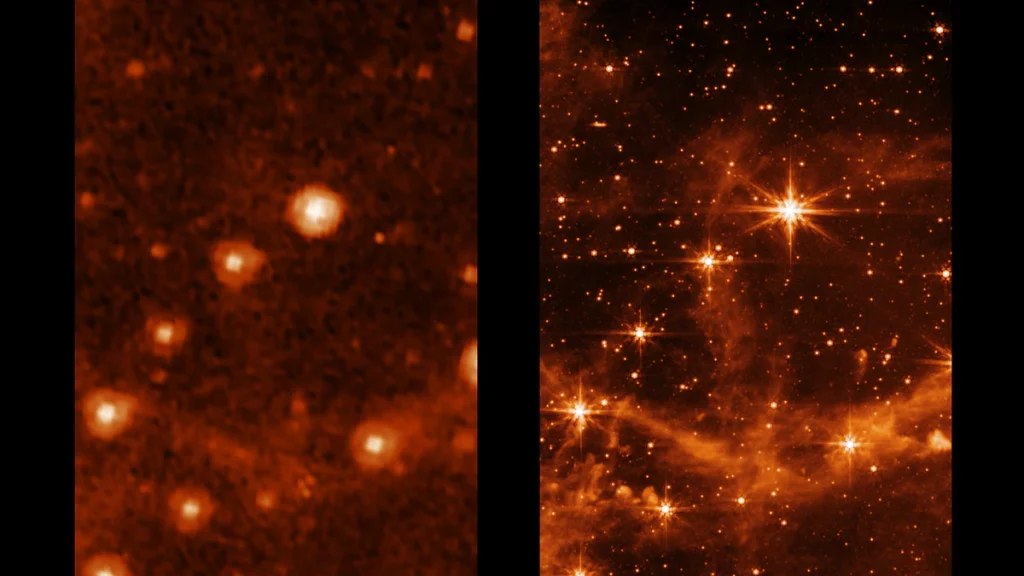Look into the depths of the universe
The James Webb Space Telescope sends the first high-resolution infrared images of stars
NASA has released the first test image from the James Webb Space Telescope. What you can see: Stars in fine detail in the middle of the Large Magellanic Cloud, a satellite galaxy of the Milky Way. The red color of the image is caused by infrared light. The Miri infrared instrument aboard the Space Telescope uses long-wave infrared radiation to explore space — including stars hidden in clouds of dust.
Read more after the announcement
Read more after the announcement
To illustrate how accurate the James Webb meter is, NASA has added a comparison image. The same stars appear, but this time captured by the now retired Spitzer Space Telescope. Only seven blurred red dots can be seen in this shot. The Spitzer Space Telescope was the first observatory to provide images of the near and mid-infrared universe.
The telescope is perfectly aligned
With the James Webb Space Telescope, it is now possible to “see the infrared sky more clearly and make more discoveries,” NASA wrote a few days ago. Blog post. An Ariane 5 rocket launched the most expensive and powerful telescope ever built from a European Space Agency spaceport in French Guiana at the end of last year. The destination was Lagrange Point II, about 1.5 million km from Earth.
Read more after the announcement
Read more after the announcement
A month later, the space telescope reached its target and began deploying its 6.5-meter primary mirror. Meanwhile, the alignment of the telescope has been completed, according to the American news channel CBS News Web Project Scientist Michael McElwain of NASA’s Goddard Space Flight Center. “We have essentially achieved perfect telescope alignment. There are no modifications to the telescope’s optics that would significantly improve our science performance.”
Before scientists can research the history of the universe on Earth, they still have to test and calibrate the space telescope’s four measuring instruments. In July, NASA plans to present the first scientific images of distant galaxies, stars and exoplanets, Klaus Pontopedan, a Webb project scientist at the Space Telescope Science Institute in Baltimore, recently announced at a press conference.




More Stories
Nvidia GeForce RTX 4090: AIDA64 gets Ada spearhead support
Rogue Trader – Details about the first cRPG in the series – CD-Action
t3n – Digital Pioneers | digital business magazine